When working or volunteering in the field, there is a risk that you could accidentally spread invasive non-native species and other biosecurity threats, such as diseases, between sites on your clothing, footwear, equipment or vehicle.
You can reduce the risk by following a good biosecurity routine. It’s important to do this every time you work in the field, even if you can’t see any invasive non-native species or diseases, as they can be spread from tiny fragments or invisible to the eye.
Basic biosecurity advice for site visits
You should consider biosecurity at the earliest stage when planning any field work, from surveying an area to removing non-native species. Some biosecurity measures can be as simple and as quick as making sure your equipment (including any sampling or survey equipment), footwear, PPE, and vehicle is clean.
- If practical do not take vehicles onto premises, keep to established tracks and park vehicles on hard standing.
- Arrive at the site with clean equipment, footwear and vehicle.
- Ensure equipment and footwear is clean (visually from soil and debris) before leaving the site.
- Ensure vehicle is kept clean - in particular, remove any accumulated mud before leaving the site.
- Make use of facilities provided on the site to clean footwear/equipment.
- Keep access to a minimum.
- Where possible avoid areas of livestock or known disease.
- Plan visits so that the highest risk site is visited last.
Resources
The resources below have been developed by a range of organisations and provide different examples of specific biosecurity guidance. There are also safety data sheets, which can be used as a guide if using Virkon or sanitising spray.
Online biosecurity training
Take free online training (external link) to improve your understanding of biosecurity. Check your knowledge with a test and download a certificate once you have passed.
General field biosecurity
- Biosecurity Guidance for Biological Surveyors/samplers (Draft) (PDF)- A Good Practice Guide to minimising the risk of moving non-native species, parasites and diseases
- Biosecurity Guidance for Scotland's Environmental and Rural Services (PDF) (SEARS) Staff (Scottish Goverment)
- Biosecurity risk assessment (PDF) and water body worked example (PDF)
Aquatic biosecurity
- Check Clean Dry for field workers
- Biosecurity for Anglers (PDF)
- Biosecurity for Boat Users (PDF)
- Biosecurity for Submerged Structures (PDF)
- Biosecurity and Natural Flood Management (PDF)
- Report on Biosecurity for Anglers (PDF) - Stuart Crofts
Marine biosecurity
Other resources
Animal diseases
Fish diseases
Amphibian diseases
- Amphibian Disease Precautions: A guide for UK fieldworkers (PDF) (ARG-UK Advice note 4)
- Hygiene protocol to contain the spread of Chytridiomycosis during fieldwork (PDF) (RACE - Risk assessment of Chytridiomycosis to European Amphibian Biodiversity)
Disinfection
- A Guide to the Disinfection of Angling Equipment (PDF)(Cefas)
- Boot Disinfection Procedures when using Antec Virkon S (PDF) (Natural England)
- Safety Data Sheet - Cleankill sanitising spray (PDF)
- Safety Data Sheet - Virkon® -S Powder (PDF)
- Safety data Sheet - Virkon® Tablet (PDF)
Biosecurity for site managers
The following tools have been developed to help managers of aquatic assets looking to improve biosecurity facilities at their sites. Information on the site should be entered into the Biosecurity facility decision support tool (Excel). This will generate a list of options for biosecurity facilities. More information on each option can be found in the User guide (PDF).
